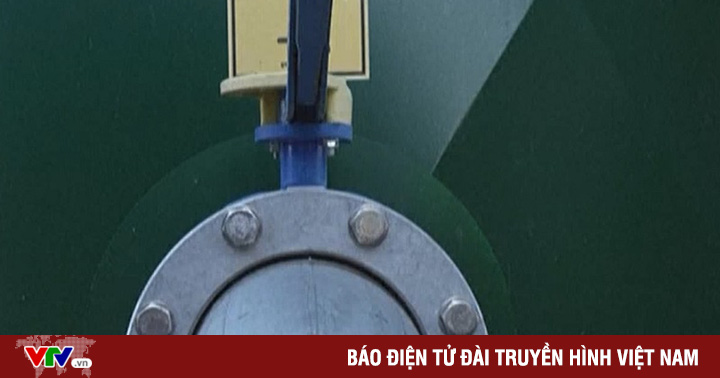The Ukraine conflict has made public opinion in Finland and Sweden increasingly insecure, forcing the two Nordic countries to consider joining NATO to seek solid protection.
Sheet Expressen of Sweden on April 25 reported Finland and Sweden can apply to join NATO as early as May. The move would cause the two Nordic countries to abandon their longstanding policy of neutrality and could help reshape security across Europe.
Analysts believe that the Russia-Ukraine conflict is the main reason why Sweden and Finland abandoned their traditional foreign and security policies and decided to become NATO members.
“The conflict in Ukraine has dramatically changed political developments in Sweden and Finland as well as public opinion in both countries,” said Alistair Shepherd, an expert on European security at Aberystwyth University. “The Russian campaign is a key factor pushing these two countries closer to the option of becoming a NATO member.”
During a joint press conference in Stockholm on April 13, Swedish Prime Minister Magdalena Andersson and Finnish counterpart Sanna Marin said that Russia’s special military operation in Ukraine “changed the entire European security landscape” as well as significantly changed the thinking about security in the Nordic region.

Finnish Prime Minister Sanna Marin (right) shakes hands with Swedish Prime Minister Magdalena Andersson on April 20. Image: AFP.
Sweden and Finland were once seen as role models for neutral policy to overcome the turbulence during the Cold War, helping the two countries consolidate and develop their economies and democracy.
After the dissolution of the Soviet Union, Finland openly sided with the West, but maintained its policy of not joining military alliances. Finnish people in recent years are not interested in joining NATO, when less than 30% of people support this option, similar to Sweden.
However, everything changed after the Russia-Ukraine conflict broke out. A recent poll showed that 68% of Finns support joining NATO and this percentage rises to 77% if it is proposed by the President and the government.
In Sweden, about 50% of people support joining NATO. In the scenario where neighboring Finland becomes a member of NATO, support for this option in Sweden rises to 62%, according to Anna Wieslander, director of the Atlantic Council in Northern Europe.
A growing number of voters in these two countries believe that NATO membership will give them the protection they need and need. “They realized that Russia had threatened the three Baltic states but did not attack, because those three countries are NATO members, and Ukraine is not,” Ian Bremmer, president of the Eurasia Group Time consultancy, wrote in the article. comment on Time April 23rd.
“Russia is no longer a neighbor as we once thought,” said the Prime Minister of Finland, whose country has more than 1,300 kilometers of border with Russia. Meanwhile, Sweden’s ruling Social Democrats say the country’s security position “fundamentally changed” after Russia invaded Ukraine.
Since the end of the Cold War, Sweden and Finland have worked to promote an increasingly close relationship with NATO, especially after the two countries joined the Partnership for Peace (PFP) agreement in 1994. and the European Union (EU) in 1995. The PFP is a cooperation agreement that NATO connects exclusively with Eastern European countries, which is believed to be the first step for these countries to join the alliance.
Sweden and Finland also regularly send forces to participate in joint exercises with NATO. The two countries have also worked closely with the US in military training since 2015.
But despite being close NATO partners, neither Helsinki nor Stockholm are covered under Article 5 of the alliance’s treaty of mutual defense. Observers believe that joining NATO will help both countries increase security assurance and deterrence against threats.
Major NATO members such as the US, UK, Germany, France and Poland have all expressed their welcome to the two Nordic countries to join. This welcome is very important, as all 30 members of the block must unanimously agree when admitting new members.
Ivo Daalder, former US ambassador to NATO from 2009-2013, said that security across Europe would be enhanced if Sweden and Finland joined NATO. However, this is likely to be met with a drastic response from Russia, causing tensions to escalate in hot spots such as the Baltic region and Kaliningrad.
In essence, the NATO membership of the two Nordic countries will further strengthen NATO’s military presence in the region Baltic region. Accordingly, both Sweden and Finland can deploy their modern and professional military forces to this area.

Russia’s Baltic fleet in formation during the Navy Day parade in St.Petersburg, Russia, July 28, 2019. Image: Sputnik.
However, Russia will certainly not be satisfied with the moves of Finland and Sweden. Kremlin April 11 warned that if the two countries abandoned their decades-old policy of neutrality and joined NATO, Russia would be forced to restore the military balance by beefing up defenses in the Baltic region, including deploying armed warships. nuclear weapons and missiles in the Baltic and North Seas.
This means that the risk of conflict will increase in Europe. Finland and Sweden will then become NATO outposts and may be the first to suffer the consequences.
“We have repeatedly asserted that NATO is an instrument aimed at confrontation and that expanding this alliance will not bring stability to Europe,” Kremlin spokesman Dmitry Peskov said on April 11.
Katharine Wright, an international politics expert at Newcastle University, says Russia is trying to influence Sweden and Finland’s decisions to join NATO, but their military campaign in Ukraine is pushing it. this progress.
However, she said that in the event that NATO agrees to admit Finland and Sweden, Russia is unlikely to take drastic military moves like with Ukraine. President Putin has always considered Ukraine a part of Russia’s history, different from Finland and Sweden.
“Russia is unlikely to send troops to intervene in Finland and Sweden even if the two countries are not officially admitted to NATO and are protected by Article 5,” expert Wright said. “That action would greatly increase the risk of a large-scale war.”
Duc Trung (According to Guardian/Financial Times/Al Jazeera)
at Blogtuan.info – Source: vnexpress.net – Read the original article here



